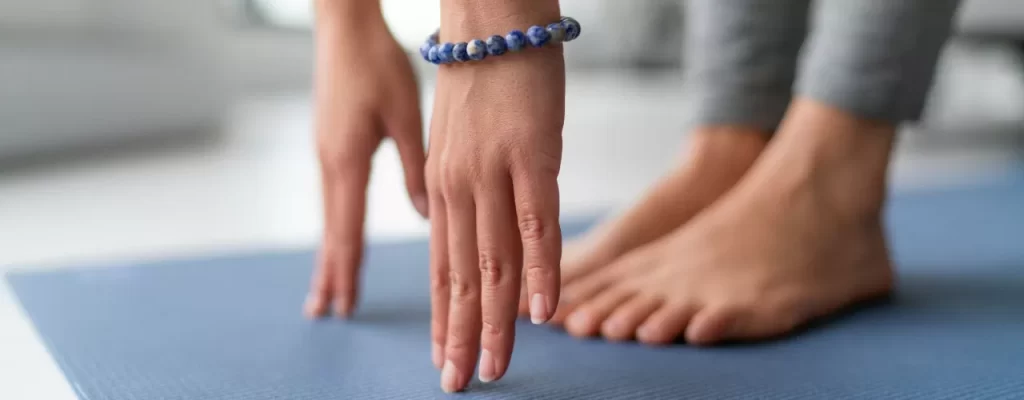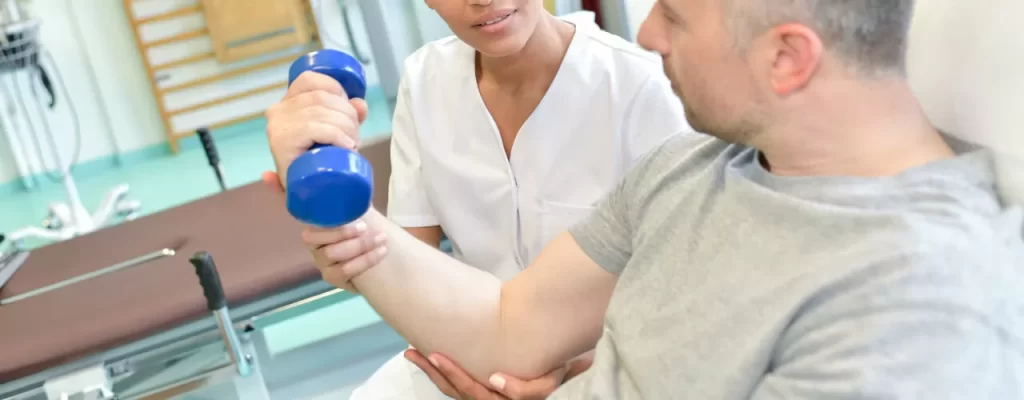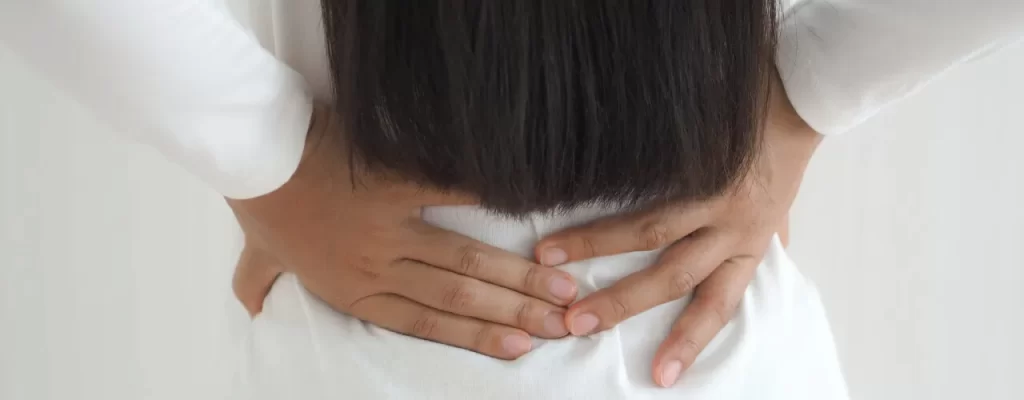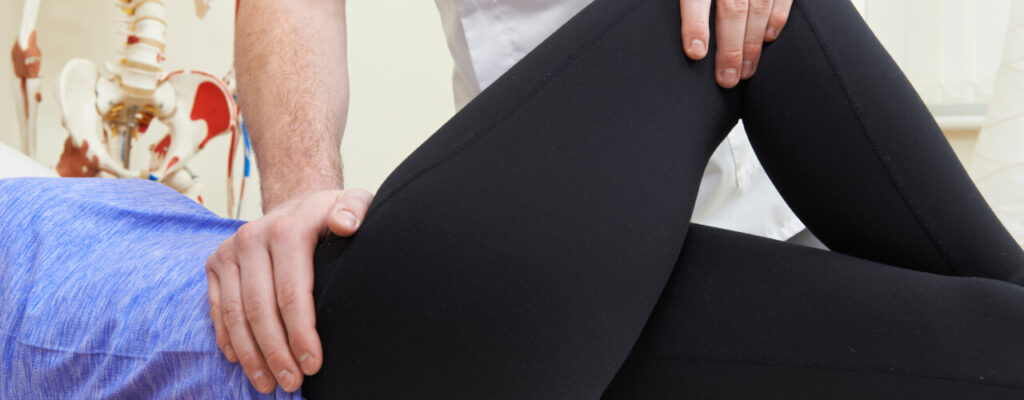Aches and Pains Zapping Morning Energy? PT is the Solution!

Aches and Pains Keeping You From Enjoying Your Mornings? Physical Therapy Can Help! Let’s face it, some of us just aren’t morning people. The reason for that varies — sometimes you just want a little extra shut-eye, and other times, it’s because morning presents aches and pains to you that you’d rather avoid. Do you leap out of bed excited at the thought of experiencing another morning – or do you just lie there, afraid to move because of the pain you’re likely to feel? Aches and pains are never welcome, and they can start your day off with low spirits when you’re forced to deal with them from your first waking moments. The good news is you don’t have to keep waking up in pain. Physical therapy can help you to understand why your discomforts are happening and how you can put a stop to them through safe, drug-free methods! Our innovative care strategies at Chesterton Physical Therapy will help you find quick relief. Inflammation and morning pain If you suffer from generalized aches and pains when you wake up in the morning, you’re not alone. Our bodies build up inflammation in the tissues throughout the day. This can be extremely subtle and you may not notice it, even by the end of the day. However, when we lie down and go to sleep, the inflammation can thicken and settle into your muscles. This in turn immobilizes your joints and can lead to aches and pains when you wake up. That same process repeats, day after day, and the pain gets worse. Eventually, chronic pain can set in if you do not make any lifestyle changes to correct the problem. This is why it is a great idea to contact our office for a consultation, before the pain leads to more serious health problems. “Is it my mattress?” Sometimes the answer to morning pain lies in your mattress — literally. According to Spine Health, “Sleeping on the wrong mattress can cause or worsen lower back pain. Lack of support from a mattress reinforces poor sleeping posture, strains muscles, and does not help keep the spine in alignment, all of which contribute to low back pain. Quality of sleep is sacrificed if a mattress does not match one’s individual preferences. A mattress that provides both comfort and back support can help to reduce low back pain and allow the structures in the spine to rejuvenate during the night. While the Better Sleep Council recommends replacing your mattress every 7 to 10 years, the way you feel in the morning is a better indicator that it’s time to replace your sleep surface. If your mattress was once comfortable but now seems to be at the root of your aches and pains, it may be time to replace it. Physical changes like injuries, surgery, and weight change can also change your body’s position as you sleep, necessitating a need to start browsing for a new mattress much sooner! Why does this part of my body hurt in the morning? Each area of the body is vulnerable to pain in its own way. A few common areas people report feeling pain are as follows: Neck pain. Have you ever felt like someone tried to twist your head right off during the night? The problem may be that you may have the wrong kind of pillow for your individual needs! Incorrect head and neck support can leave you with agonizing stiffness. Try a new pillow. Back pain. Back pain is very common and can often be the result of a poor mattress, an injury, bad posture during the day, or several other conditions. Pain can afflict any part of your back first thing in the morning. If you can barely move in the morning or never get quite comfortable at night, it’s time to take a look at your mattress and daily movement habits. Jaw pain. Does your jaw feel stiff and achy when you wake up in the morning? You may be grinding your teeth or clenching your jaw as you sleep, a problem known as bruxism. This habit is associated with emotional and physical stress. Hip pain. If the pain you experience in the morning feels like it’s on the outside of the hip and bothers you more at night, bursitis may be the culprit. If you experience hip pain that feels like it’s coming from within the joint and is at its worst upon awakening, suspect osteoarthritis. Heel pain. Do you dread getting out of bed in the morning because of the pain you know you’ll feel once your feet hit the floor? If taking those first steps in the morning is torture for your heels, but the pain then recedes as you walk around, you probably have a chronic inflammation of the arches called plantar fasciitis. How can physical therapy help me? Some people feel achy when they wake up, some feel achy when they go to sleep. Morning pain and overnight pain are closely related. Issues such as chronic lower back pain may nudge you into wakefulness many times each night, creating a twinge of pain with the tiniest body movement. By the time you have to get up in the morning, you might feel even more pain than you did when you went to bed, which can often make you want to crawl right back under the covers and go back to sleep. Thankfully, there’s a solution to your pain: physical therapy. An experienced physical therapist will know how to evaluate your symptoms in detail, see how they correspond to your sleep quality (or lack thereof), and identify the underlying causes. From there, your therapist can begin the creation of a physical therapy program aimed at eliminating or controlling the causes of your pain. For instance, they might determine that your back needs a firmer or softer mattress, or that your neck could benefit from a contoured cervical pillow. Other physical therapy treatment modalities can help you strengthen your back, tame bursitis, relieve plantar fasciitis, or control osteoarthritis symptoms. Are
Discover 5 Powerful Reasons to Make Stretching a Habit!

Are You Stretching Frequently? If Not, Here’s 5 Reasons Why You Should! Improve Your Health and Wellness by Stretching! Have you ever noticed how good stretching feels after a nap, when you first wake up in the morning, or after vigorous physical activity? That good feeling just scratches the surface with the many healthy benefits you can get from regular stretching. Our innovative care strategies at Chesterton Physical Therapy will help you find quick relief. That’s why our physical therapist commonly recommends specific types of stretching exercises to complement other physical therapy modalities. Why stretching is a big part of PT Since stretching exercises offer so many important benefits, it’s not hard to see why we use them all the time in physical therapy. Physical therapy can combine targeted stretches with strength building exercises, massage therapy, ultrasound therapy, heat or cold therapy, and many other techniques to help you feel better and stay healthy. We can also make sure you are doing the right stretches for your needs and show you how to perform them safely. Below are five ways you can improve your health, comfort and function by simply stretching! 1. Stress relief Emotional stress can often turn into physical stress in the form of muscle tension, sleep problems, and suppressed immune function. In other words, it can make you sick! Stretching exercises can help to release the accumulated tension in your body while also calming your mind. Stretches that include mindfulness work (such as yoga) can prove especially helpful for easing the stress that might otherwise impair your health. 2. Chronic pain relief Speaking of pain relief, you may be surprised and delighted to discover how just well stretching can work as a chronic pain management tool. For instance, certain stretching exercises can undo the painful muscle knots associated with tension headaches or chronic pain syndromes such as fibromyalgia. Stretching is also recommended to help control arthritis pain and stiffness. Our physical therapist can determine which kinds of stretches will best suit your needs. 3. Increased blood flow Stretching doesn’t just relax your muscles; it also helps them receive the nourishment they need. That’s because when your muscles are tight and stiff, blood doesn’t flow through them as easily – and blood contains the oxygen and other nutrients necessary for optimal tissue health and performance. Stretching to ease that muscle tension gives your circulation a welcome boost. The same effect also helps your tissues rid themselves of unwanted, pain-causing substances such as lactic acid. 4. Injury prevention Athletic events, physical training, or demanding labor can leave you with a painful strain or sprain, especially if those tissues were “cold” when they were subjected to their burdens. Gentle, careful stretching before a challenging activity can reduce your risk of acute injury. Stretching immediately after your activity will also remove any muscle tension that may have accumulated during your strenuous activity. 5. Increased flexibility Are you frustrated because you don’t seem to have the same range of motion that you once did? A variety of musculoskeletal challenges can reduce your flexibility, creating stiffness and making certain motions uncomfortable or even impossible. Stretching can gently coax the stiffness out of tight tissues. Depending on the cause and location of your stiffness, our physical therapist may prescribe exercises such as hamstring thigh hip, chest, shoulder, upper back, or bicep/tricep stretches to loosen you up and improve your mobility. So, what else should I know about stretching? It is also quite common for a physical therapist to prescribe various stretching exercises for individuals suffering from chronic pain conditions. Stretching is of particular importance when you become less mobile due to issues such as osteoarthritis. The less you move your joints, the more likely your muscles and connective tissues will be to lose some of their length. This change clearly limits your joint motion even further and leaves you in even more pain. Stretching naturally supports PT recommendations such as walking, heat therapy, or massage therapy, in order to increase blood flow to painful joints and widen your pain-free range of motion. Chronic pain syndromes often involve muscle tightness. Syndromes such as fibromyalgia and myofascial pain syndrome can cause muscle knots that limit muscle movement, resulting in pain to other parts of the body. Regular stretching can help you untie those painful knots. Get started today! Are you ready to stretch your way to a happier, healthier lifestyle? Please contact our PT center today to learn more and schedule an appointment. We don’t stretch the truth when we say we can help! Sources: https://www.thehealthy.com/mental-health/stress/stretching-exercises-for-stress-relief/ https://www.arthritis.org/living-with-arthritis/exercise/how-to/stretching-benefits.php https://www.webmd.com/fibromyalgia/ss/slideshow-fibromyalgia-friendly-exercises https://www.verywellfit.com/does-stretching-matter-3119195 https://www.painscience.com/articles/stiffness-and-rom.php http://guidetoptpractice.apta.org/content/1/SEC40.extract https://www.coachup.com/nation/articles/the-10-best-stretches-for-total-body-flexibility https://www.healthline.com/health/benefits-of-stretching#benefits 5 Ways Stretching Can Improve Your Overall Health
Chronic Pain Zapping Your Energy? PT Recharges You

Chronic Pain Zap Fighting Chronic Pain with Physical Therapy Treat Your Chronic Pain Safely! Any pain that lasts longer than three months is classified as “chronic.” When people have chronic pain for a long time, it can become a downward spiral. As a result of the pain, they become more inactive and sedentary, and more often than not, their health worsens. People with chronic pain may even turn to extreme options, such as surgery or addictive painkillers, to try to find relief from pain. If you have chronic pain but want a non-invasive, non-addictive relief option, it’s time to get in touch with our office and talk to a physical therapist. Our innovative care strategies at Chesterton Physical Therapy will help you find quick relief. How can physical therapy help me find relief? The course of therapy recommended by your physical therapist will be tailored to meet your specific needs and objectives. After an initial consultation and examination, your therapist will do their best to work with you on methods to begin to overcome your chronic aches and pains. This is going to start with education. Your therapist will explain how your pain developed and what can be done to relieve it. The goal will initially be to manage pain, so that you can eventually get back to enjoying your normal routine. Exercise, stretching, and flexibility are all part of physical therapy. Becoming stronger and more flexible over time will make it easier for you to move around with less pain. This is going to be a slow and gradual process – exercises will focus on the slow, steady and gradual improvement of your strength and flexibility. Manual therapy is a specialized type of massage that physical therapists are trained to perform. These techniques will be used to mobilize tight joints that contribute to pain, and to manipulate soft tissues for relief. This technique may be very therapeutic when dealing with pain. Finally, posture and body mechanics training will be a major part of your physical therapy. Learning how to use correct posture at home, at work, and at rest can help to relieve pain and prevent recurrence of pain. All these treatment modalities will help you return to normal life without invasive surgery or painkillers. What should I know about chronic pain? As stated by the National Institute of Neurological Disorders and Stroke, “While acute pain is a normal sensation triggered in the nervous system to alert you to possible injury and the need to take care of yourself, chronic pain is different. Chronic pain persists. Pain signals keep firing in the nervous system for weeks, months, even years. There may have been an initial mishap — sprained back, serious infection, or there may be an ongoing cause of pain — arthritis, cancer, ear infection, but some people suffer with pain in the absence of any past injury or evidence of body damage. Many chronic pain conditions affect older adults. Common chronic pain complaints include headache, low back pain, cancer pain, arthritis pain, neurogenic pain (pain resulting from damage to the peripheral nerves or to the central nervous system itself), psychogenic pain (pain not due to past disease or injury or any visible sign of damage inside or outside the nervous system). A person may have two or more coexisting chronic pain conditions. Such conditions can include chronic fatigue syndrome, endometriosis, fibromyalgia, inflammatory bowel disease, interstitial cystitis, temporomandibular joint dysfunction, and vulvodynia. It is not known whether these disorders share a common cause.” Chronic pain affects each person differently. In many cases, the pain continues long after the body is healed of injury or a surgical procedure. The good news is that physical therapy is not a one-size-fits-all approach to pain relief. Your physical therapist has many tools and techniques at their disposal to help relieve and overcome chronic pain. Chronic pain has a number of symptoms associated with it, apart from the fact that the pain lasted more than three months. Here are some of the symptoms associated with chronic aches and pains: Weight Gain and Additional Problems: People with chronic pain may put on too much weight, which can lead to a host of added problems, from diabetes to heart disease. Reduced Circulation: Remaining inactive due to chronic pain reduces your circulation, which means your cells are not receiving a healthy amount of blood and oxygen. This can cause tissues to degenerate and leads to feelings of constant fatigue. Reduced Fitness: Inactivity due to chronic pain can cause your muscles to weaken and shrink. This can have profound physical effects over time, such as impacting your sense of balance. Stiffness: Muscles and joints may feel stiffer when suffering from chronic pain. Activity Avoidance: People with chronic pain become fearful of normal activities. The fear of additional pain can cause people to withdraw from normal physical activities that they enjoy. Ready to get started? If you have suffered from chronic aches and pains, take the first step today to overcome your condition. Call our office to schedule a physical therapy appointment.
Do You Know What’s Causing Your Back Pain?

Do You Know What’s Causing Your Back Pain? Discover How Physical Therapy Can Help You Relieve Herniated Disc Pain Back pain is one of the most common complaints among Americans. Whether you experience occasional pain in your back or deal with recurrent chronic back pain, it can make it extremely difficult to complete your daily tasks. But have you ever wondered if your back pain was a sign of a more serious condition? The spine is made up of a complex series of bones called vertebrae. There are cushioning pads between each of the vertebrae that act as shock absorbers, making bending, walking, and moving around in general every day possible without pain. But if these little cushioning discs are injured, the soft center can actually rupture and cause severe pain. This type of injury is often referred to as a herniated or slipped disc, and while there is no cure for the condition, physical therapy can help manage chronic pain. Our innovative care strategies at Chesterton Physical Therapy will help you find quick relief. What does PT for herniated discs look like? When experiencing back pain, it can be tempting to simply visit your general physician in search of a quick solution. However, in many cases, all that a general physician can offer in the way of pain relief is a prescription for painkillers. Alternatively, an experienced physical therapist can offer a variety of treatment options that are designed to target the root cause of your reoccurring back pain. Some of the most common treatment options recommended by our physical therapist for herniated disc pain include: Ultrasound therapy or electrical muscle stimulation for fast pain relief and deep penetration of the targeted area Alternating treatment with ice and heat to reduce inflammation and soothe sore muscles. Therapeutic massage to help ease sore muscles Aerobic exercises like walking or using a stationary bicycle Stretching exercises that help to keep the muscles in the back flexible Why did I develop a herniated disc? The spinal column is formed by a group of bones. The cervical spine consists of seven bones, the lumbar spine has five, and the thoracic spine has twelve. Each disc has a gelatinous inner section and a strong outer ring. If the disc protrudes through the outer ring, it is known as a herniated disc. This can lead to numbness, discomfort and pain. The vertebrae and cushioning discs in the spinal column can become injured in a variety of different ways. However, when dealing with a herniated disc, injuries are most often the result of: Improper lifting resulting in sudden strain Work-related or overuse injuries where the spine has been twisted violently Excessive weight gain and obesity The natural aging process or degeneration The herniated disc can be caused by a variety of causes, including movements such as turning or twisting. Another offender is moving heavy objects. Weight can also cause herniated discs, as it causes the need for discs to bear more weight. According to Healthline, men are also at a higher risk of developing a herniated disc than women. How can I tell if I have a herniated disc? Herniated discs are one of the most common back pain complaints. They typically occur in people aged 35 to 55 years but can affect physical therapy patients of all ages. Herniated disc pain presents itself in a variety of ways depending on a person’s age, body type, and physical condition. In certain cases, a herniated disc may show no outward symptoms at all. Our trained physical therapists are dedicated to help you achieve a pain-free life. But for those dealing with recurring pain from a herniated disc, the following symptoms are also common: Neck spasms affecting the muscles in the neck and shoulder area. Neck pain that stays centered in the back and side areas of the neck. This type of pain can increase in severity when bending or turning the neck. Pain radiating out from the shoulder, arm, and sometimes traveling down to the hands and fingers. Pain in the shoulder blade area. Schedule your appointment today! If you have had recurrent back pain or pain near your neck or shoulder, it may be a sign of a herniated disc. By using targeted treatments and physical therapy exercises, our physical therapist can help you manage your herniated disc pain and prevent the use of prescription drugs or more invasive treatment options for pain. Please contact us today for more information and to schedule an initial consultation!
Are You Constantly In Pain? It May Be Time To Change Your Diet To reduce Inflammation

Are You Constantly In Pain? It May Be Time To Change Your Diet To reduce Inflammation Inflammation is a natural process the body uses to protect itself and to promote healing. During the inflammation process, your body increases its production of white blood cells. Chronic inflammation, however, can damage the body. Living with continual inflammation can cause pain, swelling, and redness in the affected areas. It can also increase your risk of diabetes, cancer, heart disease, and stroke. There are several ways you can improve your nutrition and decrease pain and inflammation, however. Are you ready to say goodbye once and for all to your chronic aches and pains? If you’re nodding your head yes, keep reading to learn more about how physical therapy and attention to nutrition can help! What is inflammation? Inflammation is the body’s natural response when it’s trying to heal or protect itself. This, of course, is usually a good thing! This is why some people choose to feel their pain and ride it out instead of grabbing an over the counter NSAID. However, inflammation is harmful when it becomes a chronic condition. Pain and inflammation are often connected. Your immune system can naturally respond to injury, ailment, or other harm through inflammation. If you have an infection, wound, tissue damage, or buildup of toxins in your body, the immune response is triggered to deal with it. Without inflammation, injuries wouldn’t be able to heal; however, if this process goes on for too long, Harvard Health, states that it can lead to a variety of health ailments such as heart disease, diabetes, and even some kinds of cancer. If you experience persistent pain that is keeping you from living life as you normally would, it is wise to contact a physical therapist as soon as possible, as it may mean that the inflammation has become chronic. The importance of physical therapy and nutrition Traditionally, chronic inflammation has been treated through bed rest and medication. However, a lack of exercise can make inflammation worse, as it constricts joints and causes muscles to stiffen. Although it might be hard to make yourself get up and move when you’re in pain, it’s normally the best option. Additionally, medications come with a whole slew of side effects, some of which can be dangerous and/or habit-forming. Luckily, pain and inflammation can be treated in much easier and healthier ways – such as diet and physical therapy! Why choose physical therapy? Physical therapy, combined with good nutritional habits, can greatly reduce or even eliminate your pain and inflammation. The American Physical Therapy Association states that the connection between pain and nutrition is strong enough that nutritional screening is often recommended. A physical therapist can provide nutritional guidance along with creating an exercise program that targets and reduces the pain and inflammation you’ve been experiencing. A physical therapist might even recommend activities such as swimming or simple stretching to increase joint flexibility and range of motion. Good nutrition along with a physical therapy treatment plan can help you manage or even eliminate chronic pain by increasing the strength in certain muscles and improving joint stability. How can nutrition provide pain relief? A few foods that can cause inflammation and should be avoided or limited include the following: Soda – Drinking water or tea in place of soda will not only help reduce pain and inflammation but may also help you shed a few pounds. Soda can increase levels of uric acid. This often causes an increase in inflammation and even insulin resistance. Fried foods – Eat your veggies raw, steamed, or baked for the most health benefits. Everything from fried chicken to deep-fried veggies can contribute to inflammation. Refined carbohydrates – Pasta, pastries, white bread, and white flour are all refined carbs that should be eliminated or eaten rarely. Refined carbs include grains that have had most of the fiber and nutrients taken out. Red meats – Protein builds muscle and cartilage. Red meat, especially meats that are processed, can lead to increased inflammation. Healthy, lean protein is a crucial component when creating a diet to reduce pain and inflammation. Chicken is often considered neutral, while many types of fish fight pain and inflammation in the body. Just like there are plenty of foods to avoid because they cause inflammation, there are plenty you can start to incorporate into your diet to fight or decrease inflammation! Some of them are: Berries – Strawberries, blackberries, blueberries, and raspberries are all good choices. Berries have an abundance of antioxidants that can eliminate inflammation. Fatty Fish – Wild-caught salmon, sardines, and mackerel are great sources of Omega-3s, which can fight inflammation. They may even limit stiffness in the joints that is sometimes associated with rheumatoid arthritis. Olive oil – Olive oil is a monounsaturated fat that tastes great on salads and in cooked meals, and it can help reduce inflammation. Make sure to select olive oil that is extra virgin in order to receive the most health benefits. Green Tea – Green tea is rich in polyphenols and antioxidants that can reduce inflammation. When preparing green tea, use water that’s not higher in temperature than 160 degrees since boiling water may destroy many of the antioxidants. Leafy green vegetables – Almost all fruits and vegetables contain what is called phytonutrients that can help fight inflammation, so pick up some kale or spinach to go into a salad the next time you’re in the produce section. It’s time to get your health back on track Instead of relying on surgery or pain medication, consider improving your diet or beginning a healthy physical therapy program customized to meet your specific needs. Put together, these two things can seriously change your life, and help you to live pain-free. Sources: http://www.apta.org/blogs/PTTransforms/2016/11/16/nutrition/ https://www.health.harvard.edu/staying-healthy/foods-that-fight-inflammation
Chronic Pain Controlling Your Life? It’s Time For a Solution

Chronic Pain Controlling Your Life? It’s Time For a Solution Did You Know PT Can Help Even the Most Persistent Pain? Did you know that approximately 80 percent of Americans have experienced (or will experience) chronic back pain? That’s a depressing statistic, especially if you’re already one of those sufferers. Chronic back pain can prevent you from performing the countless daily tasks you need or want to perform. Even when you’re not engaged in activity, your back pain may be keeping you miserable 24/7. But don’t assume that drugs can provide more than temporary relief, or that surgery won’t create more problems than it solves. Instead, go with the healthy, natural way to kiss your back pain goodbye — through physical therapy. What is chronic pain? Chronic back pain refers to pain that lasts more than three months. It is a progressive pain that gradually worsens with time and basic daily activities. Furthermore, the specific cause of back pain may remain unknown. A person simply may not know what caused it or pinpoint a point of origin. However, most people can recover from back pain by understanding its causes, especially those that do not derive from an incident, such as a car accident. Chronic back pain Chronic back pain may arise from two issues, including a sudden, traumatic injury or repetitive stress on the vertebrae. Pain includes sensations, such as a prick, burn, tingle, sting, sharp pain and aches. Acute pain is typically an expected bodily response to a severe injury. However, the repeated use of joints after an inflammatory response may lead to the worsening of symptoms and disease progression, explains the NINDS. In addition, those with poor posture, bulging or herniated discs, arthritis, skeletal irregularities and osteoporosis may suffer from chronic back pain more often than their peers, says the Mayo Clinic. Other facts, such as age, weight, poor lifting practices and even mental health conditions, may increase risk for back pain, and it only takes one injury for a condition to persist into the realm of long-term problems. PT and chronic back pain – how it can help Instead of numbing yourself with drugs or risking major surgery, give physical therapy a chance to relieve your chronic back pain the safe, natural way. Our physical therapist will first take the time to examine your back, analyze your symptoms, evaluate your medical history, and talk to you about your pain management goals. This information enables the physical therapist to devise a comprehensive physical therapy plan just for you. Here are some ways you can benefit from such a plan: Mindfulness practices and other techniques can help you reduce anxiety and other reactions to pain that might make the pain worse, helping you control your pain responses for the better. Our physical therapist can recommend specific lifestyle modifications to help you ease stress on your back and avoid future back problems. Laser therapy, massage therapy, and heat or cold treatments can reduce chronic inflammation and relax painful muscle spasms in your back. Strengthening exercises can give weak back muscles the reinforcement they need to hold your back straighter and with less fatigue. Stretching exercises can help you increase your range of motion, allowing you to do more with less back pain. PT and chronic back pain – how it can help Instead of numbing yourself with drugs or risking major surgery, give physical therapy a chance to relieve your chronic back pain the safe, natural way. Our physical therapist will first take the time to examine your back, analyze your symptoms, evaluate your medical history, and talk to you about your pain management goals. This information enables the physical therapist to devise a comprehensive physical therapy plan just for you. Here are some ways you can benefit from such a plan: Mindfulness practices and other techniques can help you reduce anxiety and other reactions to pain that might make the pain worse, helping you control your pain responses for the better. Our physical therapist can recommend specific lifestyle modifications to help you ease stress on your back and avoid future back problems. Laser therapy, massage therapy, and heat or cold treatments can reduce chronic inflammation and relax painful muscle spasms in your back. Strengthening exercises can give weak back muscles the reinforcement they need to hold your back straighter and with less fatigue. Stretching exercises can help you increase your range of motion, allowing you to do more with less back pain. Considering physical therapy before drugs or surgery Back pain can be either acute or chronic in nature. Acute back pain often occurs as the direct result of torn muscles or other sudden, intense damage. But as agonizing as cute back pain may be, at least you have the comfort of knowing that your pain will probably subside as the injury heals. Chronic back offers no such comfort. By definition, any kind of chronic pain lasts for more than 3 months, either attacking you in bouts or plaguing you with constant discomfort. The underlying cause is often progressive and/or irreversible. Common causes of chronic back pain include: An old back injury that failed to heal properly, leaving you with internal scarring and chronic stiffness A narrowing of the spinal canal known as spinal stenosis Degenerative conditions such as osteoarthritis of the spine Chronic muscle strain from an unbalanced posture or weak back muscles Bulging or herniated discs Drugs can relieve chronic back pain, but only imperfectly. After a few hours of lessened symptoms, you have to take another dosage, and then another. If you’re using opioids to dull your pain, you can end up in a frightening cycle of increased tolerance and addiction. The most extreme form of treatment, spinal surgery, can permanently limit your back’s flexibility. You might even end up with an even more painful problem known as failed back surgery syndrome. Get fast and effective relief today You have the power to master your chronic pain, starting with the decision to treat yourself to physical therapy.Contact
4 Reasons Hip and Knee Pain Doesn’t Have to Control Your Life

4 Reasons Hip and Knee Pain Doesn’t Have to Control Your Life If you have been struggling with hip and knee pain for a while, it may feel like your pain is here to stay. You might even feel like nothing in the world can offer you lasting joint pain relief! Good news is on the horizon though — physical therapy is one of the best ways to achieve freedom from hip and knee pain. With the right physical therapy treatments, you can lessen the pain you experience in your hips and knees – and possibly even eliminate it altogether. Call our office today to learn more. Our innovative care strategies at Chesterton Physical Therapy will help you find quick relief. What is hip and knee pain? Hip and knee pain can be caused by a variety of medical conditions as well as from certain injuries. It often occurs when inflamed tendons from over-exertion or an athletic injury. Tendinitis, dislocation, sprains, and pinched nerves can all contribute to or be the cause of hip pain. Hip pain may also result from repetitive injuries or poor posture. Fractures, tendinitis, and knee bursitis are all common knee injuries. Injuries that include torn cartilage or damaged ligaments can cause knee pain. Medical conditions such as arthritis or gout can cause mild to severe knee pain. You may be experiencing stiffness or swelling in one or both knees, and it might be difficult to stand, walk, or fully straighten your knee. Sometimes knees will make popping or crunching noises. If you’re experiencing hip or knee pain, don’t assume it will just dissipate over time! Chances are that you do need to see a physical therapist for help. What benefits does physical therapy offer? Hip and knee pain can be debilitating – it seems like no matter what you have on your schedule for the day, if you move around too much, you’re going to experience pain. Thankfully there are ways to reduce your pain over the long term. It may take some time and effort on your part, but physical therapy has proven time and again to help reduce hip and knee pain for patients of all ages and backgrounds. You might be wondering, “How does the pain relief I can get from physical therapy last for so long? Well, there are a few reasons! We’ve compiled some of the most obvious ones in a list for you below. Physical therapy will prevent future injuries. One of the big frustrations with joint pain is that it never seems to fully go away. Even if you rest for a while and feel better, when you go out and start moving again the injury can flare up all over again. But with physical therapy exercises, you get much stronger than you were before. The added strength allows your muscles to better support your joints, so you are less likely to experience additional irritation in the joint. A physical therapist can teach you how to move in the proper ways. Many times the pain you are experiencing in your hip and knee is related to unhealthy movement patterns. They may have been learned over time or in response to an initial injury. Those unhealthy movements cause added strain on your joints and lead to further pain and injuries. Your physical therapist will help identify unhealthy movement patterns and provide you with education that will allow you to replace those patterns with ones that will protect your joints from further injury. Physical therapy can help you live a healthy and active life. Chronic hip and knee pain can be significantly improved or eliminated through regular exercise and a healthy lifestyle. Of course, you have to be able to move without significant pain to exercise – something that is made much easier by physical therapy. Your physical therapist can help you improve your hip and knee pain and teach you ways to exercise so that you avoid injuring your joints. Through physical therapy, you can regain strength and mobility so that you can lead a more active lifestyle. It will stop your pain problem at the source. If you just treat the symptoms of a hip and/or knee issue, you are almost guaranteed to see the problem pop up again later on. However, if you can determine the true source of the pain problem, you can actually treat what is causing the pain. Physical therapists have a process to identify the causes of hip and knee pain so that they can give you targeted treatments designed to get to the bottom of what is causing your pain. Common causes of hip and knee pain A great number of problems can cause hip and knee pain. Some of these are related to musculoskeletal misalignment, poor posture, and/or excess weight gain; others occur as the result of natural aging or unhealthy sports/work habits. Your hip or knee pain may stem from: Osteoarthritis Tendinitis Bursitis Traumatic injuries, such as dislocation of the joint Postural/alignment issues that throw your body off balance, straining the knees or hips Runner’s knee, an instability of the kneecap Infections A skilled physical therapist can often tell the cause of your hip or knee pain from its location. For example, pain along the inside of the hip is more likely to be caused by a problem with the bones or cartilage. Pain along the outer side is typically caused by a problem in the muscles, tendons or ligaments. Contact our clinic for an appointment If you are currently struggling with hip and knee pain, we want you to know that we are here to help. Our physical therapy team can help you reduce both acute and chronic pain caused by injuries, disabilities, illnesses, and more. Contact us today or visit us in Chesterton to schedule an appointment with your physical therapy team and get the relief you’ve been longing for!

